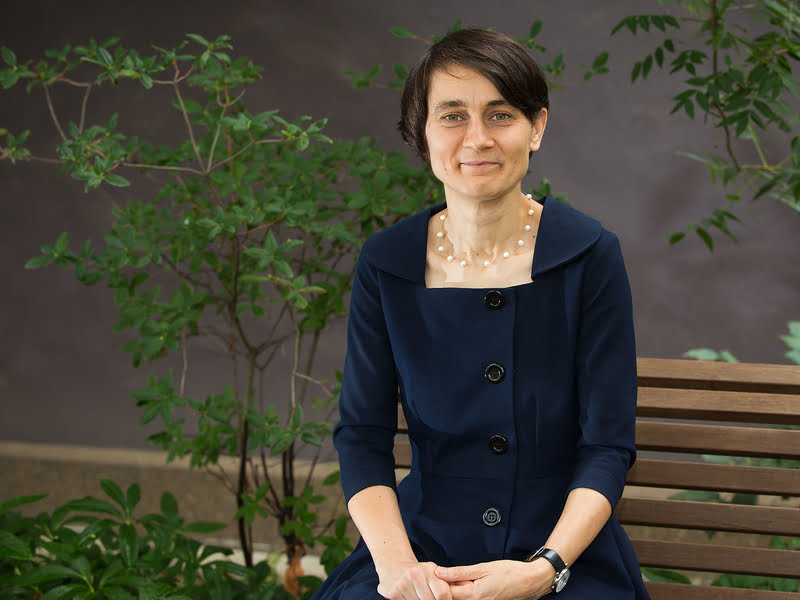Australian universities are embracing the CS+X model now being championed by Stanford, to offer courses that blend computer science with other disciplines in order to make ICT study more palatable and graduates more employable, as the robot era takes hold.
Stanford is 18 months into a six year trial of CS+X, that it claims helps to “balance pragmatism with ambition.” A joint major rather than a double degree the courses available this year blend computer science with humanities disciplines such as art practice, classics, various languages , classics and history.
Rather than emerging with a bald ICT degree, graduates develop deep insights about how technology can be applied to specific tasks and sectors.

The ANU claims it’s already ahead of the pack with its flexible double degrees which now make up 41 per cent of all courses studied. Professor Marnie Hughes-Warrington, ANU Deputy Vice-Chancellor (Academic), said that the model allowed “serendipitous combinations” permitting undergraduates to “think about careers that don’t exist yet.”
She offered the example of siblings at ANU; one studying computer science and criminology, another science and international security. Instead of “backward facing” degree courses which reflected what current business people thought ought to be taught, the flexible double allowed these more “exploratory” choices.
However they are double degrees, often taking four to five years and leaving most students with a debt nudging $50,000; Stanford’s approach has been to focus on the double major taking generally three years.
Professor Elanor Huntington, dean of the college of engineering and computer science, said that beside the flexible double degrees ANU would, in 2016, offer a CS+X masters course in applied analytics that combined computer science, statistics and social research.
“For people who want to do data analytics and apply computing and mathematics in context,” she said.
She added that the university wanted to extend that CS+X model to undergraduate courses, probably in around a year’s time.
Meanwhile at Monash University, from 2016 the Faculty of IT is also offering a wider sweep of double degrees such as computer science and education, IT and fine art, and software engineering and science.
In contrast to the Melbourne (University) Model which favours vertical doubles where subjects follow one another chronologically, Monash offers the disciplines in tandem.
Professor Ann Nicholson, associate dean of education in the Faculty, noted however that since 2011 Monash – which has historically turned out more ICT graduates than any other Australian university –had allowed undergraduates in IT to also study a major of eight units, in say, accounting. Increasingly she said that the university was advocating students in other faculties such as business or science take an IT major in an X+CS model.
This broader education she said, better prepared 21st century graduates for a “complex, cross disciplinary, and constantly changing world.”
Speaking at the ACS’ Reimagination conference in Sydney last month Sally-Ann Williams, engineering and outreach manager, at Google Australia, noted that;
“Careers are no longer linear – most students will have eight career changes in their lifetime – so we need to change the idea of studying this degree, to (studying) these skills and these disciplines.
“We also need to map outcomes to the real world – students read the literature and careers guide – but they are profiling researchers – but that’s not where most of the STEM jobs are. We need to extend that and expose the diversity of careers in our industry.
“I call them CS+X careers … or X plus CS – where X is another discipline – the problem you are trying to solve in the world or your passion.”
Williams offered the example of computer science savvy medical scientists who had developed contact lenses that track glucose levels; or the twinning of computer science with bio-mechanics that was allowing 3D prosthetic limbs to be printed in remote regions of the world.
“These are the careers of the future…we need to change the narrative from STEM careers to the careers of the future.”
Careers of the future are also likely to be disrupted by the advent of increased automation and machine learning.
Professor Tom Davenport, from the US’s Babson College, who presented a keynote at Reimagination indicated that while computer programmers might not be displaced by robots in the near future, there would be impacts from automation. Having broader discipline insights could be useful.
While he called out as “hogwash” Oxford University forecasts that as many as 47 per cent of US jobs would be taken over by robots, Prof Davenport did acknowledge that the structure and range of jobs would be profoundly altered.
He cited Nobel Prize winning economist Bob Schiller who has warned that advancing machine intelligence is the most important problem facing the world today, with profound implications for policymakers, as nations grapple with the impact of citizens with potentially “zero economic value.”
“I think there is a fair amount of evidence that knowledge work jobs are going to be (disrupted) next and the big bad machines are coming for our jobs. We can’t afford to be complacent about this or we will be in big trouble.”
Prof Davenport said that while IT does not replace jobs, it does replace tasks within jobs. But that there would be tasks machines could not handle.
“My argument is that we need to think about augmentation – how smart humans and smart machines can work together for a better outcome.”
Enter CS+X.
Do you know more? Contact James Riley via Email.

